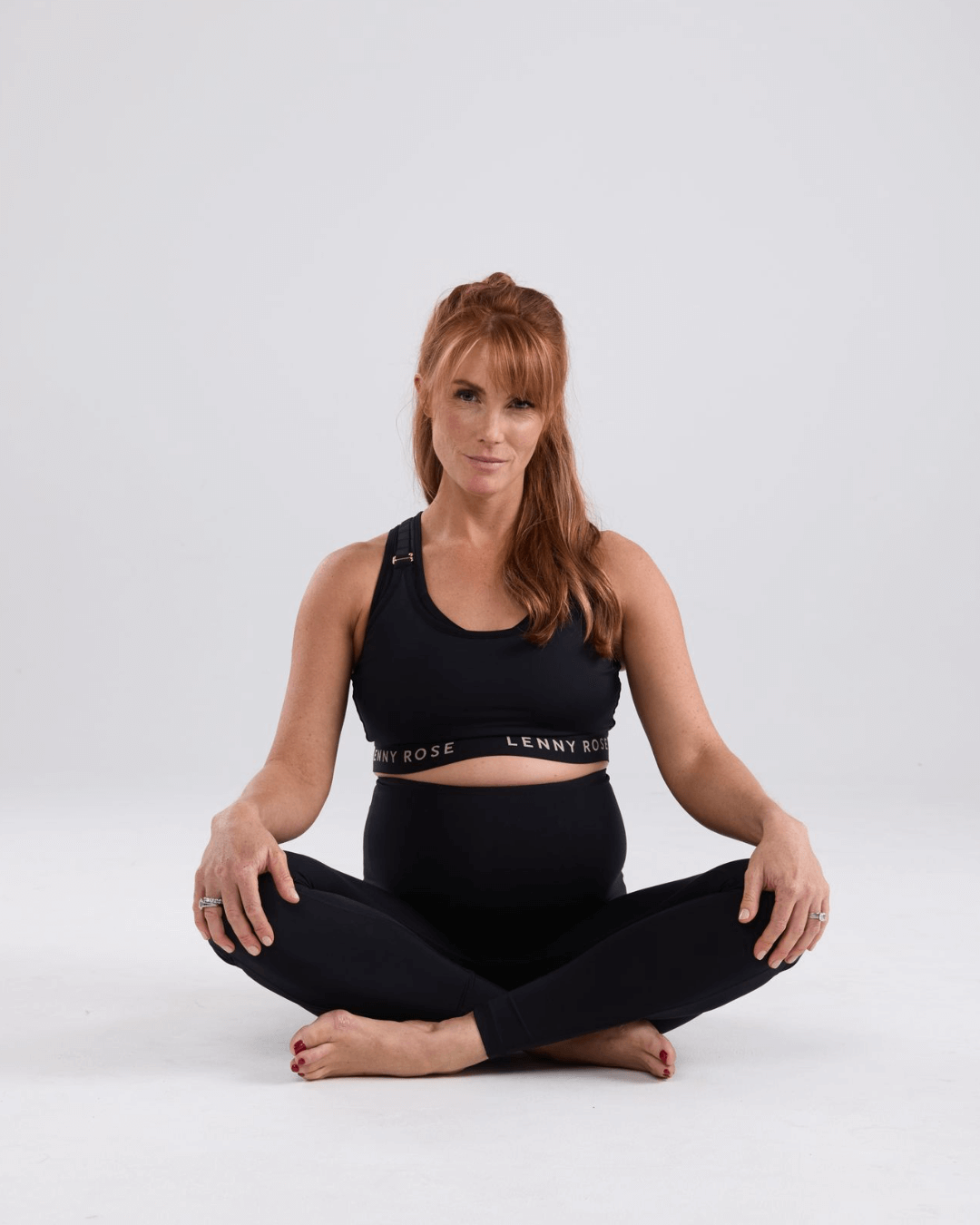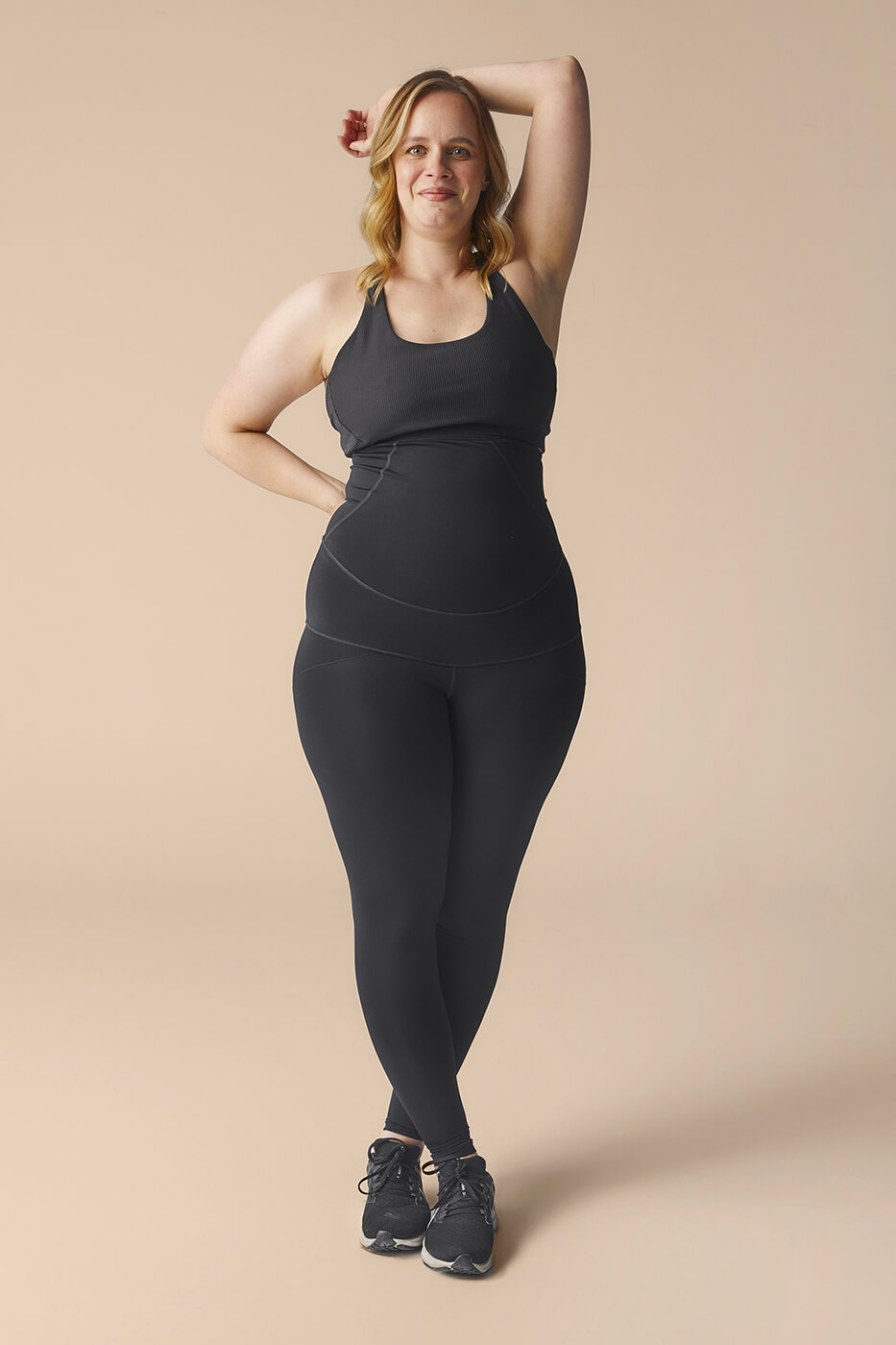If you think sit-ups are good for your pregnancy, think again! Read this blog to learn 6 core pregnancy exercise myths and what to do instead (according to a physio).
You may have heard that it’s important to exercise your core during pregnancy, to help reduce back pain, ab separation and prepare yourself for labour, birth, and motherhood.
So what are pregnancy safe core exercises? Are sit-ups the answer? Although gone are the days of doing sit ups or crunches when pregnant (I hope! – sorry Michelle Bridges), exercises to maintain your core strength in pregnancy can help for an easier and more comfortable journey, as well as, recovery post baby.
Physio, prenatal yoga teacher, and pregnancy wellness specialist, Rosie, guides you through safe core exercises during pregnancy below and debunks some common myths along the way!
Busting the Top 6 Core Exercise Myths
- You Can’t Do Core Work While You Are Pregnant.
So you may still be wondering, can I do abdominal exercises while pregnant? While traditional ab exercises that compress or squash your abdominal area are off limits, there are so many other ways to strengthen your core.
In fact, there is a much greater demand on your core as your bump grows. Therefore, it’s so important to maintain core strength throughout the trimesters of pregnancy. Some great ways to exercise your core are outlined below.
- Sitting knee lift
- Side-lying crunch
- Core breathing
- The standing crunch
- The standing bicycle
- Squat
- Cat cow pose
- Side-lying leg lifts
You may also have the question - When should I stop core during pregnancy? - I believe that it’s important to be aware of your core and pelvic floor throughout your pregnancy. This is especially true towards the end of pregnancy when the load and demands on your body increase with your growing belly and body.
If fatigue and other niggles prevent you from being as active as usual, the great thing about core workouts is you can easily integrate it into everyday movements. Moving from sit to stand, rolling over, and lifting anything heavy are all fantastic examples of “core work” you can do all day, every day to get you strong for the task ahead.
As you approach the end of your pregnancy, you should focus on relaxing and releasing your pelvic floor as well (which is another topic entirely) but we still need to maintain some strength for the course of your gestation and into motherhood.
- Sit Ups Are Fine In The First Trimester
I recommend, if you are still in the camp of doing traditional ab exercises in your training programs prior to pregnancy to shift away from these as soon as you find out you are pregnant. Sit ups should not be a part of your 1st trimester workout.
Whilst you don’t have a visible bump, we want to avoid anything that overly compresses the abdomen and uterus from early on, including traditional sit ups and twists, and start to learn:
- Correct pelvic floor technique,
- Deep abdominal activation, and importantly, coordination of your breath and your core.
You may be wondering, “Can you do planks in pregnancy?” The answer is, it depends.
If you were doing planks before entering pregnancy, then chances are, you can continue to do them along your pregnancy journey. You should and will need to watch for any back, abdominal or pelvic pain as you are doing them, as well as, what we call “doming” (where there is the separation of your abs and you get a bump, or “peak” popping through the centre).
If you experience any of these, then you can modify planks for pregnancy by coming down to your knees (which we would suggest from second trimester anyway), and then elevating your hands on a bench or chair - all of which help to reduce the load on the abs, core and spine.
- Kegels Are The Best “Core Exercise” To Master In Pregnancy (True And False)
Whilst mastering pelvic floor (or “kegels”) in terms of strengthening and coordination with your breath are really important for preventing and managing symptoms such as stress urinary incontinence, pelvic and back issues, and laying down the foundations for a smoother recovery postpartum.
If we just do “kegels” or pelvic floor exercises lying or sitting, we aren’t really doing ourselves the best service in preparation for the demands of pregnancy, labour and motherhood.
Once you have mastered correct deep core and pelvic floor activation, including timing with the breath, then we need to get functional as soon as possible.
Did you know that coughing, sneezing, holding your breath in downward dog, and going from sitting to standing places more pressure on your pelvic floor and core than lifting a 20 lb (or 10 kg) weight? YEP!!!!
So we need to master these basic functional movements in daily living to work on having a functional core. Try integrating your pelvic floor lifts as you go from sit to stand, any time you have to lift something heavy, or as a pre-empt (also known as “the knack”) to a cough or sneeze. Get a deeper dive in our free prenatal exercise guide.
- Core Is Just Your Abs
Once upon a time we thought of the core as the centre of the body, (think abs and maybe butt and lower back muscles), but nowadays we have a more holistic understanding of the body.
We now think of core as extending well beyond your “abs”. Our body is housed in a continuous system of connective tissue, or fascia, (think of a “gladwrap”-like structure) which supports our muscles, organs and body tissues. This means that we are quite literally, connected from head to toe.
So having a strong midsection means we can move and transfer load from one part of the body to another more efficiently, as we aren’t losing energy as we move.
Think about how hard it is to lift a sleeping or unhelpful child vs one who is active and willing! Or, imagine the difference between trying to thread string into a small hole vs a stick or rigid object – its clear which will get things moving more effectively!
Whilst having a six pack is desirable for many, what we really want out of a strong core is one that can transfer load well and respond dynamically to the environment around us.
In someone without back pain or other symptoms, our deep core muscles should switch on before we move – between the thought and the action – to “pre-tension” or prepare the body for movement.
In someone with pain or altered body mechanics (such as pregnancy), this may not be happening automatically. So, re-learning pelvic floor and core coordination, and learning the “knack” can be a great way to stay strong and pain free.
- Only Some Women Get Ab-separation (Diastasis Recti)
Recent research suggests that most women (up to 99-100%) will have some level of ab-separation by the 35th week of pregnancy. It’s not an “if” but a “when” and “how much.”
Whilst around 40% of cases of ab separation will resolve on their own by about 8 weeks postpartum, the rest will need some level of rehab to restore optimal function in the core. The more we understand and practice good core and pelvic floor practices in pregnancy, the less likely we are to be in the other 60%!
A great pair of supportive tights, like our Sacred Support Maternity Leggings, can give you support with light compression, and greater awareness of this area.
- Its Normal To Leak A Bit In Pregnancy And Motherhood
Ok, this one is the most frustrating thing I hear! Women everywhere putting up with mild leaking, even if it’s only when they jump, cough or sneeze. It’s extremely COMMON, but not NORMAL, and not something we have to go through the rest of life experiencing!
A skilled women’s health therapist will be able to assess and help you to treat and resolve these symptoms with correct technique and progressively building up your capacity.
Modified Abs Exercises To Do Instead
Here is a great short video on core strengthening exercises for pregnancy that are suitable for all trimesters. Check out our Pelvic Perfection workout below.
Once you have mastered pelvic floor lift on the exhale breath, add a gentle “hug of your baby” (the old “draw your belly button to your spine” sensation) to lightly tension your deep abdominals and protect your tummy and spine.
Whilst pregnancy ball exercises may feature heavily in some prenatal exercise classes and pregnancy core workout videos, they aren’t on the top of my list as a way to maintain core strength during pregnancy. This is because we need to make core work and staying strong for pregnancy and motherhood - functional, to ensure we are properly prepared for the “sport of motherhood”, as I like to call it.
Whilst training our “abs” in a traditional sense isn’t smart (or useful) in pregnancy and early motherhood, having a greater understanding of your core and how to stay strong for pregnancy and motherhood can help you to keep moving well and stay feeling great, despite the myriad of physical changes happening as you and your bump grow.
To get a deeper dive into my take on prenatal exercises from a health professional perspective, download our free ebook now.





